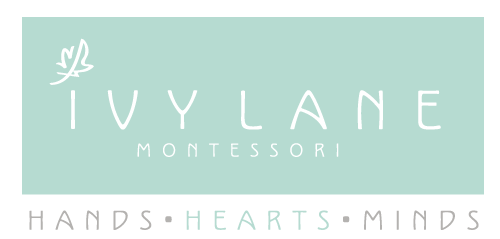MONTESSORI METHODS
Practical Life: Practical life exercises are everyday activities, usually home activities, available for the child in child-sized forms. These exercises are very important for the child. For the child, unlike adults, they are working to perfect themselves and their abilities. They imitate what they experience in the world around them, especially their home environment. They refine and perfect their skills throughout their time at Ivy Lane. We provide plenty of opportunity and material for the child to use. The activity is more important than the end result.
Language: The language subject is broken into four components; Listening, speaking, reading and writing. The use of language underpins all aspects of the Montessori curriculum. Children, in their own time, will develop their language skills. They will learn to recognize letters, identify sounds, blend phonetic words, build words and eventually read confidently and passionately.
Mathematics: Mathematics plays an important in all of our daily lives. By understanding patterns, sequencing, recognition of numerals, quantities, decimals etc. at this stage a child allows themselves to thrive in addition, subtraction, multiplication, division and excel in later life. The mathematical activity within the classroom ensures to capture the child’s attention and excite them in many ways.
Geometry & Algebra: The geometry exercises develop a child’s understanding of space and objects, flat dimensions and 3d dimensions.They offer concrete representations of mathematics and facilitate deep levels of understanding of mathematics in later years.
Sensorial: The sensorial exercises are devised to develop and refine each of the 5 senses. The child is encouraged to work with the sensorial materials and thus experiences abstract concepts in a concrete manner (SNMCI: 2013).
Culture: The History, Science and Geography subjects aim to develop the child’s knowledge, respect and appreciation for our world, the diversity of living and non-living things things past and present and for the interdependence and inter-relationship between things in the world.






